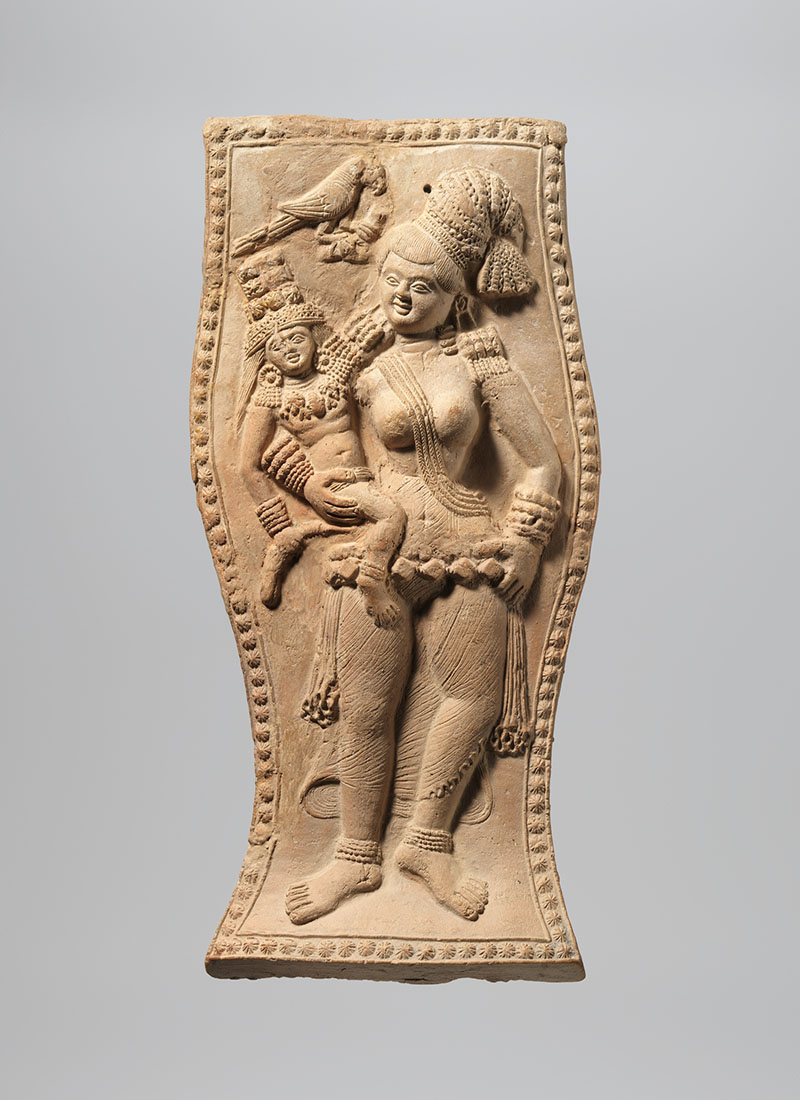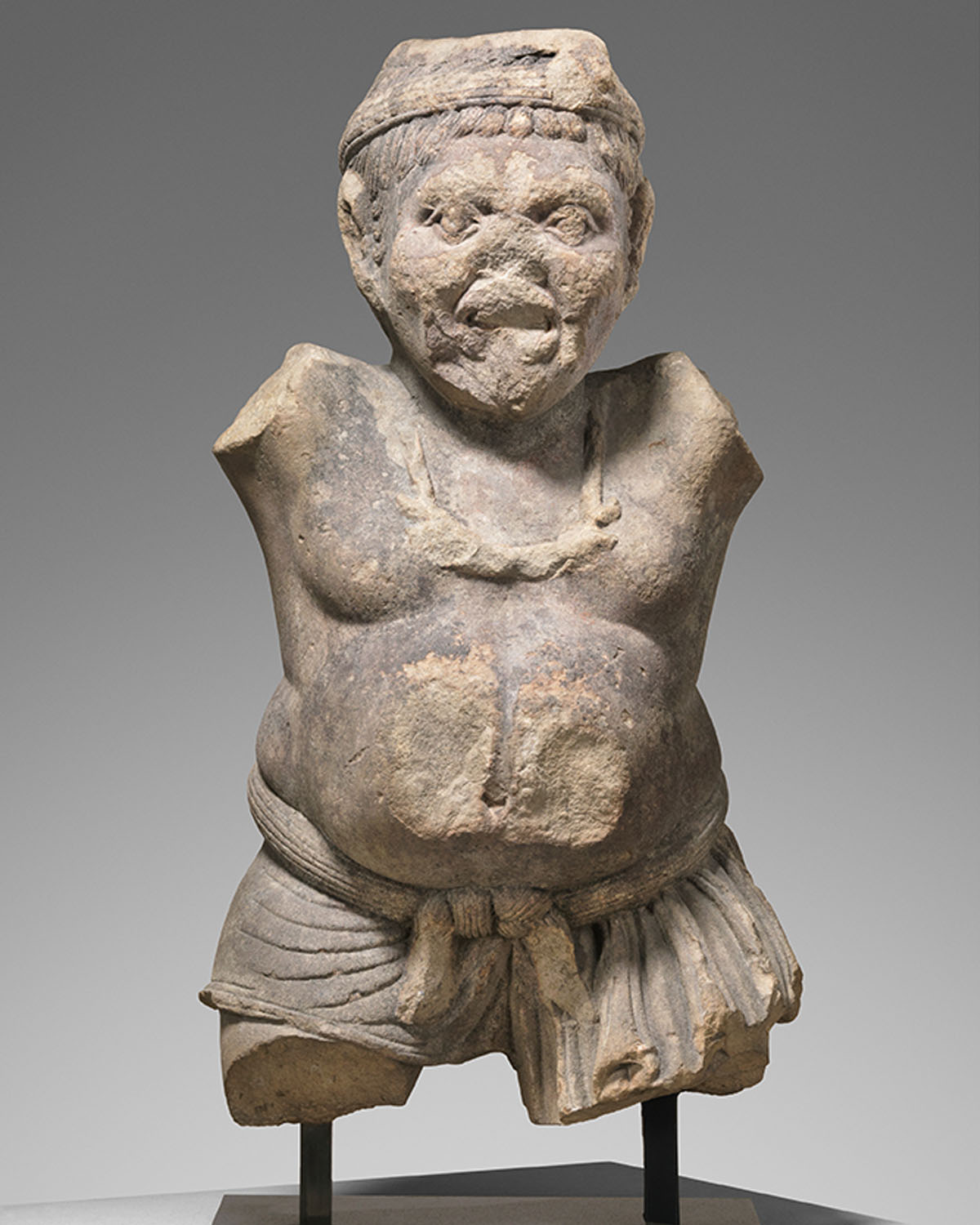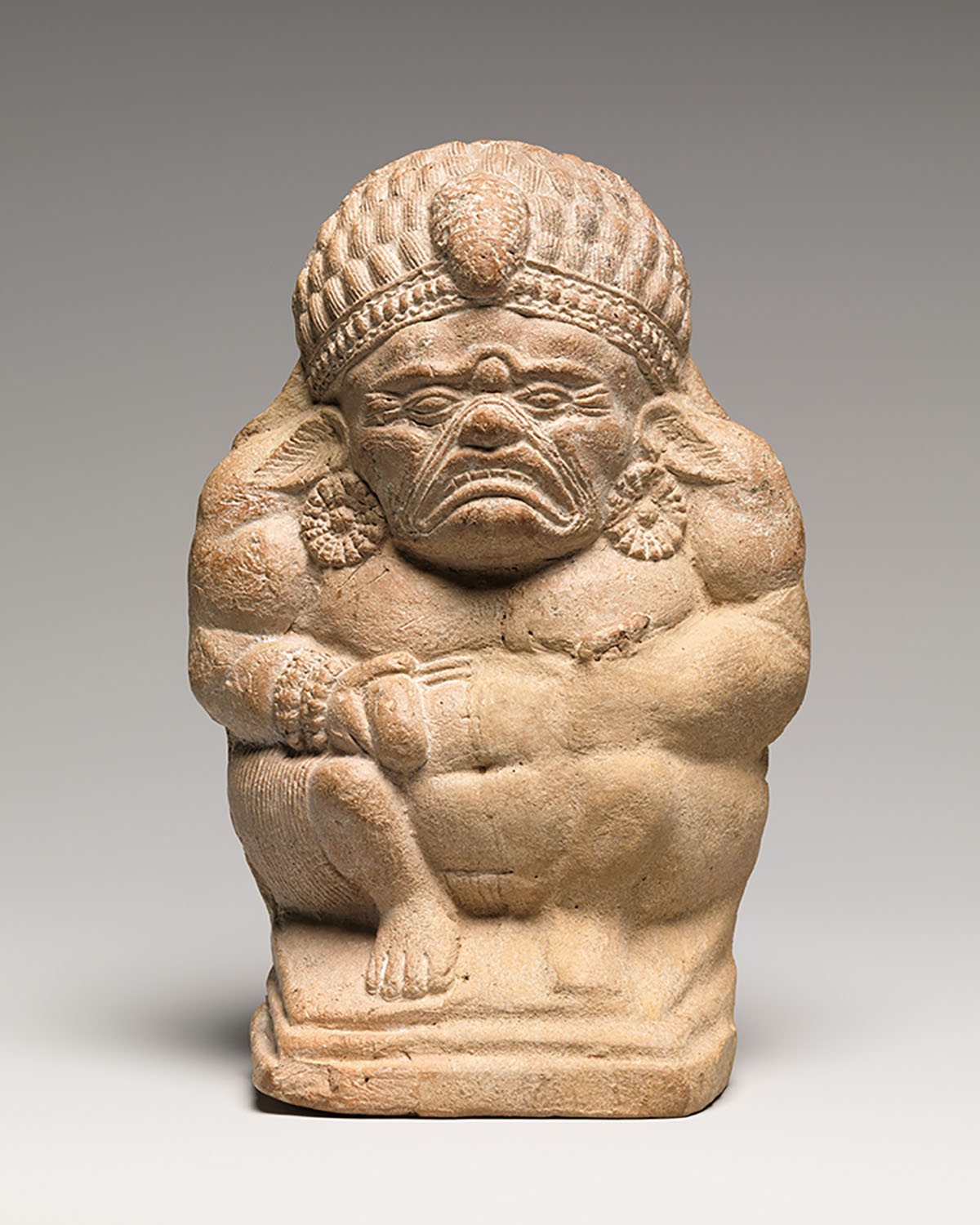ARTICLE
Yaksha and Yakshi
Among the earliest known images of yakshas and yakshis can be found in sculptural reliefs on the Bharhut and Sanchi stupas. They are generally depicted as attendant figures, sometimes to the aniconic Buddha. This may be seen in sculptures from the Mauryan and post-Mauryan period, such as the yakshas from Parkham and Vidisha and the yakshis of Besnagar and Didarganj. In the last centuries BCE and early centuries CE, the yaksha iconography adopted softer features such as a prominent belly. This is especially prevalent in sculptures of Kubera, considered the king of yakshas in some traditions, but also the god of wealth in others. He is depicted with abundant jewellery and wears a dhoti tied underneath a protruding belly. The yaksha figure from Pitalkhora, Maharashtra may be considered an example of Kubera iconography. Kubera’s mounts include a horse, elephant or a ram. He is also depicted holding a mace or a club. The yaksha Manibhadra was also considered an important figure, with several Buddhist, Jain and Hindu literary references to his popularity and worship. The yaksha sculpture from Parkham is widely believed to be a representation of Manibhadra.
Yakshis are generally depicted as voluptuous figures with nude upper bodies, wearing necklaces, bangles and anklets; their lower torsos and waists are decorated with clothing and more jewellery. Due to their associations with the natural world, they are often represented next to or holding onto trees; such yakshis are referred to as shalabhanjikas, which may reference the birth of the Buddha under the sala tree by Maya. They might also hold a pot with water or a lotus flower, both associated with fertility, or might be represented alongside a makara or naga.Yakshi figures are sometimes depicted standing on top of grotesque, dwarf-like figures, as seen in the Kushan period Bhuteshwar yakshi reliefs.
Though yakshas and yakshis faded in popular Buddhism and Hinduism in the mid-first millennium CE, they were propitiated in some Tantric Buddhist rituals as the fulfillers of wishes. They continued to be depicted and sometimes worshipped in Jainism through the mediaeval period, where they are portrayed as attendant figures to the twenty-four Tirthankaras, with the yaksha on the left and yakshini on the right side.
Bibliography
Our website is currently undergoing maintenance and re-design, due to which we have had to take down some of our bibliographies. While these will be re-published shortly, you can request references for specific articles by writing to hellomapacademy@map-india.org.









